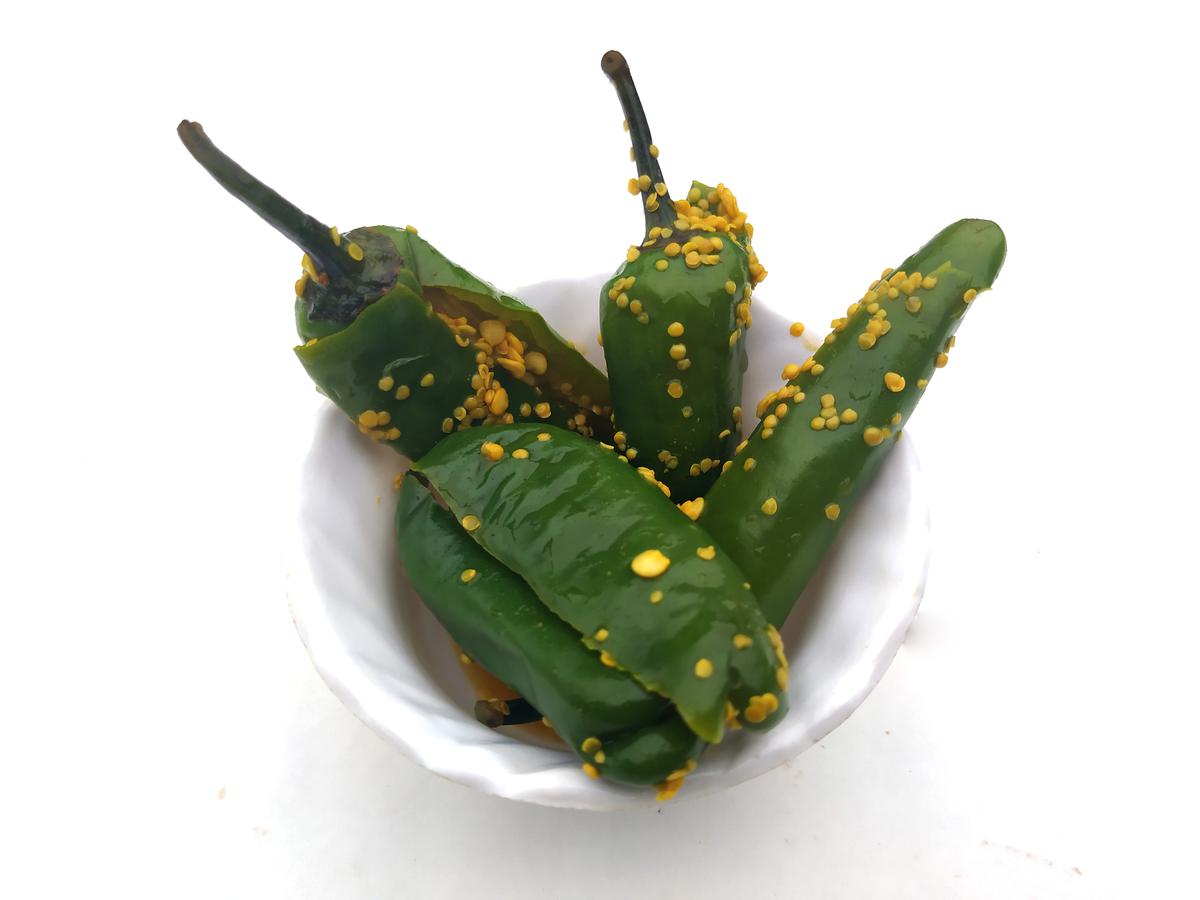Where I come from, women could beat the march of time by making pickles,which lasted for seasons
Where I come from, women could beat the march of time by making pickles,which lasted for seasons
Come summer, and images of Amma squatting on her haunches, pickling baby mangoes, lemons and gooseberries, return to my mind. It’s hard to hold on to memories when the objects and subjects that animated them have passed on.
Still, I am the proud owner of the family jaadi or pickle jar, which has seen the Rao family through several summers. The pickles we stored in this olive green jar were healthy and nutritious long before fermented food became a hashtag.
Pickling season entailed a flurry of activity, beginning at the crack of dawn. Amma would be up, turning the kitchen into a bustling laboratory, where different types of ingredients simmered and bubbled, sat immersed in salt baths or rubbed with spice pastes, waiting to be mixed and transformed into something bigger than themselves. Something that would last longer than they would on their own.
Pickle-making was Amma’s favourite kitchen exercise, and her pickles never turned bad. More than the pickle-making itself, what she probably found more cathartic was the act of prepping for the big day.
She’d wash a range of glass bottles, stripping them of their Kissan jam or Horlicks labels, and leave them out in the sun to dry. Meanwhile, she’d scrub the jaadi with a mixture of lemon and salt, followed by the usual routine: wash, dry, wipe.
Clean and tight
The pickling masala would be made in batches, and once cooled, transferred into a large canister. Amma would powder the hing, smoke the oil, squeeze the lemons (typically by hand) and air out the salt on a white cloth.
She worked with an adroitness I cannot adequately describe in words. Since there was no water involved, and especially given that the opportunities for hand-washing were many, I always marvelled at how she managed to keep things clean and tight. She would have at her disposal at each pickling station a clean cloth to wipe her hands, and several ladles and spoons, cleaned and wiped dry.
The lemon pickle was the easiest to make, gooseberry/amla was a bit complicated, involving a few more steps: soaking it in lemon juice and salt first, and after a few days, mixing in the masala. Mango pickle had its distinct set of rules.

Chilli pickle
| Photo Credit: Getty Images/iStockphoto
The green chilli pickle was the toughest to tackle: each green chilli had to be slit and carefully de-seeded, rubbed with salt and left to cure. Then, separately salt-cured ginger would be added to the mix, and finally, the masala would be thrown in.
In awe
My favourite part was always the seasoning, the oggarane. There was something so captivating about the way it smoked and hissed its way into the fiery, red depths of the pickles, that it felt like a well-deserved denouement for both the pickles and their maker. I longed for this final act, watching in awe as Amma went around pouring the sacred oggarane on her freshly-made pickles.

Indian gooseberry in a basket
| Photo Credit: Getty Images/iStockphoto
Gooseberries are everywhere this summer, and I think of Amma as I wash and dry the fruit. My lips pucker just at the thought of her famous amla pickle — steeped in Byadagi chilli paste and the juice of several lemons so that it retains the spice and tang for an entire season. I feel almost obliged to make a small batch every year as an ode to all the summers I spent relishing her pickles, straight out of the jaadi.
The jaadi has weathered many storms along with me, moving back and forth across continents, and now has a crack, which forbids me from using it for pickles. But I have devised my own kintsugi for it, using it as a vase for fresh flowers and herbs. It stands as reminder of the fact that back where I come from, the women could beat the march of the calendar months by making pickles, which lasted for seasons.
Recipe for amla pickle
Ingredients
15-20 amla/ gooseberry
Juice of 4 lemons
1.5 tbsp salt
1 portion Byadagi chilli paste
1 portion pickling masala
2 tbsp sesame oil
1 tsp mustard seeds
A generous pinch of hing
Method
Wash and dry the amla, making slits all around each. You can also chop the amla into bits and discard the seeds
Take a dry, wide-mouthed bottle/ pickle jar, add lemon juice, salt and the amla. Fasten the lid, give it a good shimmy-shake
Let it sit in a well-lit place for three days
On the fourth day, open the jar, add the Byadagi chilli paste. For the paste, soak 8-10 Byadagi chillies in hot water for about an hour, strain the water, and grind into a paste using very little water
Then add the pickling masala, close the lid, and gently shake the jar in a swirling motion. For the pickling masala, dry roast 1 tsp methi seeds, cool, and grind along with 2 tsp of raw mustard seeds
Heat oil in a pan, add mustard seeds and once they crackle, add hing
Let the seasoning cool down a bit, then add it to the pickle. Close the lid, keep it in a dry, cool place or in the refrigerator for a week, which is a good time for the masala to get absorbed in the amla
The writer is a true blue Bangalorean, lover of all things related to food and culture.
























